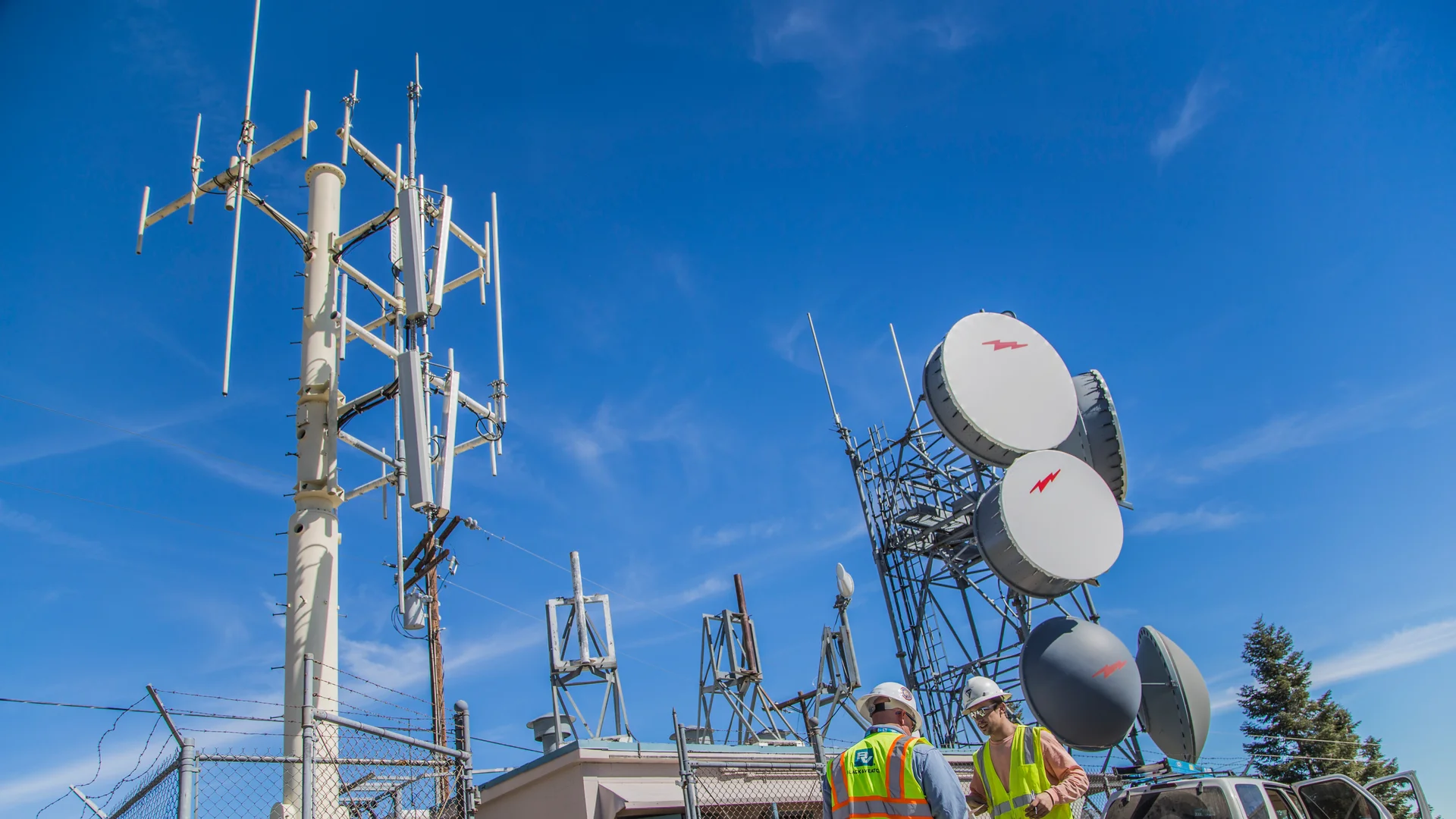
800 MHz Band 26 for utilities: FAQs on the breakthrough spectrum powering Private LTE and 5G networks

There’s a new kid on the spectrum block for utilities. 800 MHz Band 26 spectrum (800 MHz) hit the streets in early 2025 and offers the leading solution for utility private LTE and 5G (pLTE/5G) networks. As utilities modernize grids and manage rising data demand from smart grid technologies - access to reliable, high-performing broadband spectrum has been a major roadblock - until now.
800 MHz is fully compliant with international 3GPP standards, requires no clearing and delivers up to an impressive 14 MHz of bandwidth. As a low-band frequency, it provides excellent coverage and signal penetration - making it ideal for the vast and varied geographical service areas which utilities must support.
Choosing the right spectrum is critical. The wrong choice can lead to obsolete equipment, security risks, bandwidth capacity deficits, high implementation costs and networks that can’t keep up with evolving technologies or renewable integration. This FAQ answers your top questions about 800 MHz Band 26 and what it means for your utility’s future.
What is 800 MHz Band 26 spectrum?
800 MHz Band 26 is a licensed segment of radio frequency spectrum used to support private LTE and 5G networks. The FCC and NTIA assign each band of spectrum specific uses to ensure efficient and interference-free communications across industries and organizations. Originally designated for public safety and commercial mobile, 800 MHz is now being repositioned for critical infrastructure. Black & Veatch, as the exclusive sales agent, T-Mobile and Grain are working together to make the spectrum available for industrial and utility use - specifically for pLTE/5G networks.
For utilities, this is a gamechanger. Finding the right spectrum has long been a challenge in deploying secure, high-speed wireless networks. Now, with 14 MHz of bandwidth, strong signal propagation, and full compatibility with international 3GPP standards, 800 MHz offers a rare combination of capacity, coverage, and reliability. It’s a powerful enabler for grid modernization, smart infrastructure, and the digital transformation of utility operations.
How does the 800 MHz Band 26 compare to the 900 MHz and CBRS spectrum for utilities?
Think of wireless spectrum like a highway: lanes represent bandwidth, and cars represent data. The more lanes you have, the more data you can move—and the faster it flows.
800 MHz Band 26 offers 14 MHz of bandwidth, giving it a wider “highway” than many other licensed bands. Today, for comparison:
600 MHz (Band 71): 10 MHz (not available nationwide)
900 MHz (Band 106): 6 MHz
700 MHz Upper A Block: 2 MHz
1400 MHz (Band 110): 8 MHz
1700 MHz (Band 54): 5 MHz
Lower-frequency bands like 800 MHz also have better propagation, meaning they cover more ground with fewer towers. This combination of capacity and coverage directly impacts Total Cost of Ownership (TCO).
In a bandwidth comparison study by Black & Veatch, a utility serving 60K square miles– including large urban areas - would need 2.5 times more sites to meet smart grid capacity demands using 6 MHz compared to 14M Hz that 800 MHz provides. The 800 MHz spectrum’s broader bandwidth translated to over $600 million in savings over 20 years.
While CBRS (3.5 GHz) offers more bandwidth, it is partially licensed and requires many more sites due to its shorter range, which can significantly increase deployment costs.
Bottom line: 800 MHz strikes a powerful balance between coverage, capacity, and cost—making it a strong contender for utilities and enterprises looking for efficient, long-term spectrum solutions.
What type of devices and radios support 800 MHz Band 26 for Private LTE and 5G?
Since 800 MHz is existing spectrum, it has a robust vendor ecosystem. According to the Utilities Technology Council (UTC)’s recent report, Ecosystem Summary for Private Broadband Networks, several leading manufacturers already offer compatible equipment—including modems, gateways, and push-to-talk radios.
Major players like Aviat, Ericsson, and Nokia have Radio Access Network (RAN) systems that support Band 26 today. GE Vernova’s Orbit platform is also in development, further expanding the ecosystem.
Because Band 26 is a globally standardized spectrum, it offers strong long-term value. It ensures seamless interoperability, supports emergency mutual aid, and enables carrier roaming for extended coverage and built-in redundancy—making it a future-ready choice for critical communications.
What are the utility use cases driving private LTE and 5G networks with 800 MHz?
Utilities representing one-third of the U.S. are already turning to 800 MHz Band 26 to power private pLTE and 5G networks for a wide range of mission-critical applications and use cases. With its broad coverage, strong penetration, and scalable capacity, 800 MHz is ideal for:
AMI 2.0 - real-time metering and remote management
Mission Critical Push-to-Talk (MCPTT) - secure, always-available voice communications
Distribution Automation (DA) - low-latency connectivity for monitoring and controls, such as switches, reclosers, Volt/VAR, FLISR, and PMUs
Wildfire mitigation – proactive, real-time monitoring of power lines and environmental conditions, as well as enabling applications like falling conductor protection (FCP)
Fully 3GPP-compliant and ready for 5G, 800 MHz is a future-proof solution, delivering a long-term, scalable communications medium that can accommodate increasing device density and data requirements.
For guidance on evaluating whether 800 MHz is the right fit for your utility, see our article on building a business case for spectrum investment—a critical step in justifying the network needed to support these high-value use cases.
Future-Proofing Utility Networks with 800 MHz Band 26 Spectrum
One of the standout advantages of 800 MHz is its capacity to scale with utility needs. As more devices and applications come online—especially with the growth of distributed energy resources (DERs), the AMI 2.0 transition and other grid modernization efforts—utilities need a network that can grow with them. Band 26 offers:
High spectral efficiency for dense deployments
Excellent propagation characteristics for rural and urban coverage
Support for both LTE and 5G, enabling a smooth technology evolution
In short, 800 MHz Band 26 provides a future-proof foundation for utility communications, combining the reliability of legacy systems with the flexibility and performance of next-gen wireless technologies.
More questions? Book a call with an advisor.
Contact Us
Looking for a partner in innovation?
Let's Talk

